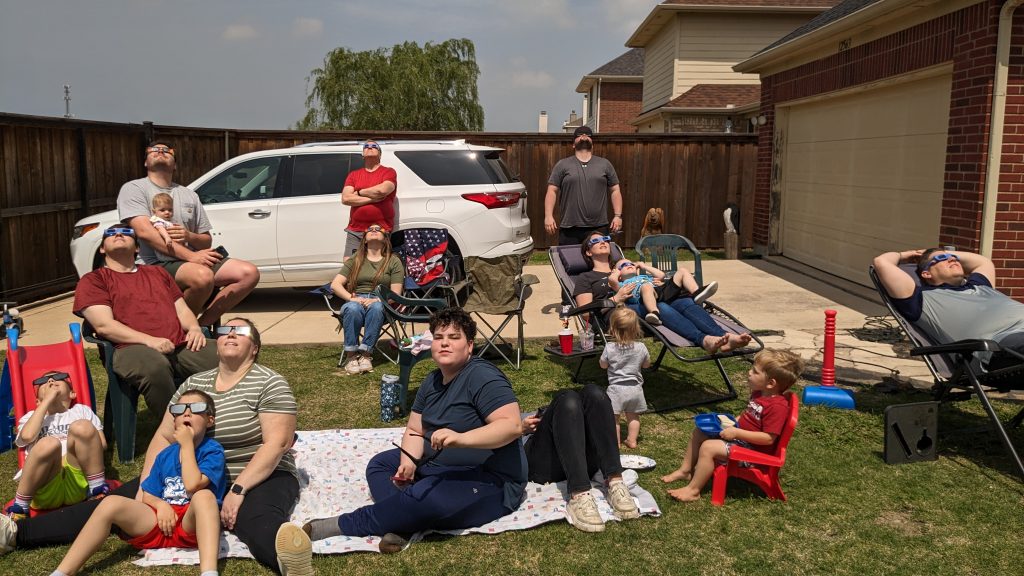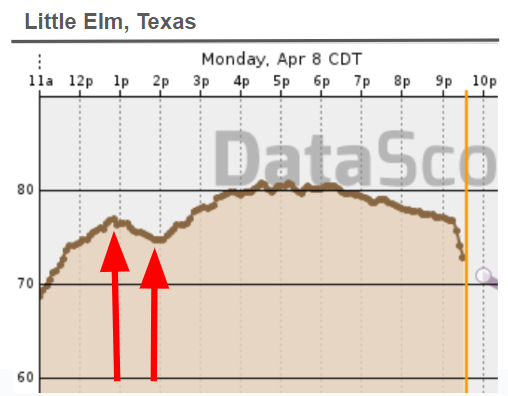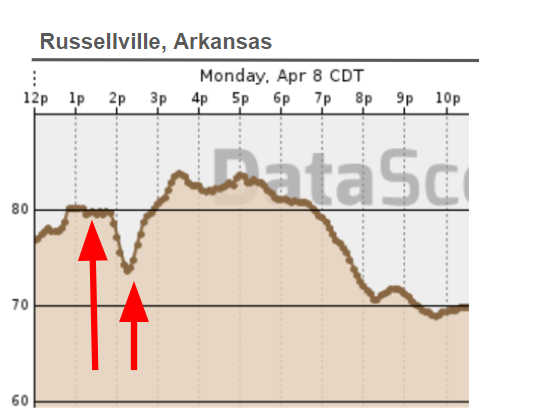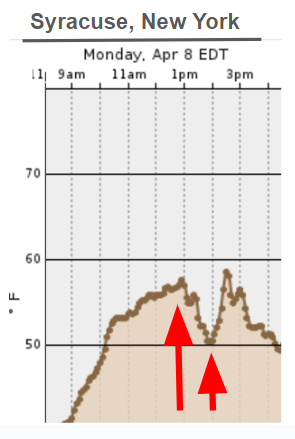Kerry Challoner Anderson
I was one of many Americans who spent time and money to position myself, and a bunch of my family, in the path of totality for today’s eclipse. Was it worth it?….ABSOLUTELY. I could wax poetic about how bizarre it was to stare at the sun being gobbled as the moon passed in front of it.

Or the quick transition to a “dusk-like” darkness for just a few minutes. The street lights came on and the birds started to chirp. As the sky darkened we were able to view Jupiter and Venus during mid-day.


At this point, I could add more photos of the eclipse but since I am a meteorologist I of course was not only interested in what the sun looked like but also how the earth’s atmosphere responded. The heat from the sun heats our air and drives our weather. So I thought it would be interesting to observe the change in the temperature.

Since I didn’t think of this idea until the eclipse started and I wasn’t home, I was left to use the thermometer for the grill which captured a reading of 78 F at ground level right at the start of the eclipse and saw a drop to 66. However, this is not an accurate representative of the air temperature, which should be taken about 3 feet above the ground. So to get a better reading and to see the change in air temperature I went to our Tempest Network . This paid off with some impressive results. Our Tempests gave a different eclipse view, showing the temperature drops along the path of totality.


Starting from the south in Little Elm (a north Dallas suburb), then to Russellville, Ar, up to Indianapolis, In and finally to Syracuse, NY we see up to an 8 F change during the eclipse. The closer to the path of totality the greater the temperature change.


